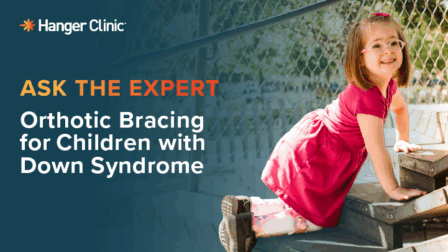Neuromuscular Scoliosis
An abnormal curvature of the spine as a result of another underlying condition.
Understanding Neuromuscular Scoliosis
Neuromuscular scoliosis is one of three main types of scoliosis that cause an abnormal curvature of the spine. This type of scoliosis can occur in children who have medical conditions that impair their ability to control muscles that support the spine, such as cerebral palsy, spina bifida, spinal cord injury, spinal muscular atrophy, or other syndromes affecting the nervous or muscular systems.
Signs and Symptoms
Signs of neuromuscular scoliosis often appear early in a child’s life. Common symptoms include uneven shoulders, leaning to one side more than the other, and rib or waist protrusion on one side of the body compared to the opposite side. This disorder causes difficulty with proper balance and alignment of the trunk, possibly affecting sitting and walking. For example, family and caretakers may notice that the child is unable to sit in a balanced position independently. In neuromuscular scoliosis, the spinal curve may progress more rapidly and continue to worsen even into adulthood.
Diagnosis
The diagnosis may be confirmed through a physical assessment by an orthopedist, neurosurgeon, or neurologist. Typically, a radiograph is taken to confirm the alignment of the spine and the magnitude of the curve. X-rays are usually taken at regular intervals to confirm any changes in the scoliotic curves and to confirm if the curves are responding to brace treatment.
Treatment
Early intervention is important. Neuromuscular scoliosis is much more likely to produce curves that progress, and continue progressing into adulthood. As the scoliosis curve magnitude increases, the patient may develop progressive loss of balance and later have difficulty with mobility and walking. If left untreated, the curve may become less flexible, causing seating issues, hygiene issues, and possibly leading to thoracic insufficiency syndrome and interfering with lung function.
A spinal orthosis or custom thoracic lumbar sacral orthosis (TLSO) can be prescribed as a means to improve spinal alignment. The main goal of this orthosis is to provide stability, alignment of the spine, and sitting balance to encourage independence of the patient’s arms and hands. With the custom TLSO, enhancements and customizations can be made to accommodate for other indications based on the patient’s condition. For patients in a wheelchair, the brace can be worn to assist with transferring from a wheelchair to the bed and to improve head and neck alignment. The brace does not correct and may not prevent the progression of spinal curvature in a patient with neuromuscular scoliosis. The goal is to improve spinal alignment and increase the patient’s function.
Because children with neuromuscular scoliosis can have a range of medical issues in addition to the spinal curve, treatment involves a team of doctors and healthcare professionals from different medical specialties working together to provide care.
Neuromuscular Scoliosis. Scoliosis Research Society.
Latest Updates
Subscribe to stay up-to-date on our latest posts.


